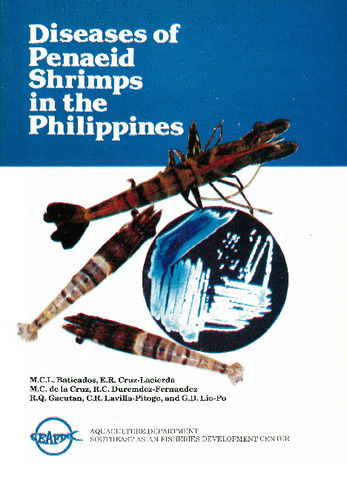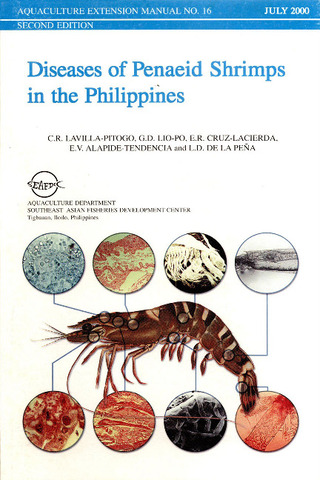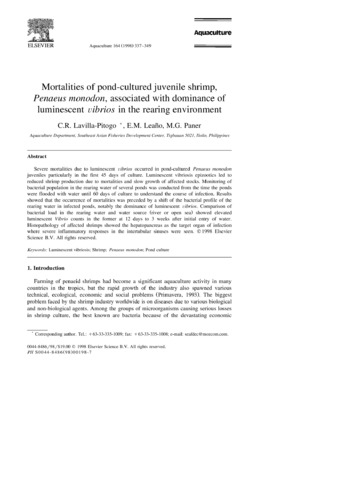Diseases of penaeid shrimps in the Philippines
- Global styles
- MLA
- Vancouver
- Elsevier - Harvard
- APA
- Help
Share
Abstract
The manual provides information on the diseases that affect the 3 major species of shrimps culture in the Philippines: Penaeus monodon, P. merguiensis and P. indicus. It includes the common name of the disease, causative agent, species affected, stages affected, gross signs, effects on the host and methods of prevention and treatment.
Other versions
2nd Ed.Suggested Citation
Baticados, M. C. L., Cruz-Lacierda, E. R., De la Cruz, M. C., Duremdez-Fernandez, R. C., Gacutan, R. Q., Lavilla-Pitogo, C. R., & Lio-Po, G. D. (1990). Diseases of penaeid shrimps in the Philippines. Tigbauan, Iloilo, Philippines: Aquaculture Department, Southeast Asian Fisheries Development Center.
Type
BookISSN
0115-5369ISBN
971851127XSeries
Aquaculture extension manual; No. 16Format
46 p. : ill.
Collections
Related items
Showing items related by title, author, creator and subject.
-
Series: Aquaculture extension manual; No. 16
Diseases of penaeid shrimps in the Philippines
Lavilla-Pitogo, Celia R.; Lio-Po, Gilda D.; Cruz-Lacierda, Erlinda R.; Tendencia, Eleonor ; de la Peña, Leobert D. (Aquaculture Department, Southeast Asian Fisheries Development Center, 2000)
The manual provides information on the diseases that affect the 3 major species of shrimps cultured in the Philippines: Penaeus monodon, P. merguiensis and P. indicus. It includes the common name of the disease, causative ...
; de la Peña, Leobert D. (Aquaculture Department, Southeast Asian Fisheries Development Center, 2000)
The manual provides information on the diseases that affect the 3 major species of shrimps cultured in the Philippines: Penaeus monodon, P. merguiensis and P. indicus. It includes the common name of the disease, causative ... -
Viral diseases of shrimp in the Philippines
Andrino-Felarca, Karen Grace S.; Estante, Erish G.; Lazado, Carlo C. (Research Signpost, 2015)Shrimp is a high-value commodity and one of the major aquaculture species in the world, including the Philippines. The shrimp farming industry is dominated by the black tiger shrimp Penaeus monodon and the Pacific white ... -
Mortalities of pond-cultured juvenile shrimp, Penaeus monodon, associated with dominance of luminescent vibrios in the rearing environment
Lavilla-Pitogo, Celia R.; Leaño, Eduardo M.; Paner, Milagros G. (Elsevier, 1998)Severe mortalities due to luminescent vibrios occurred in pond-cultured Penaeus monodon juveniles particularly in the first 45 days of culture. Luminescent vibriosis epizootics led to reduced shrimp production due to ...







